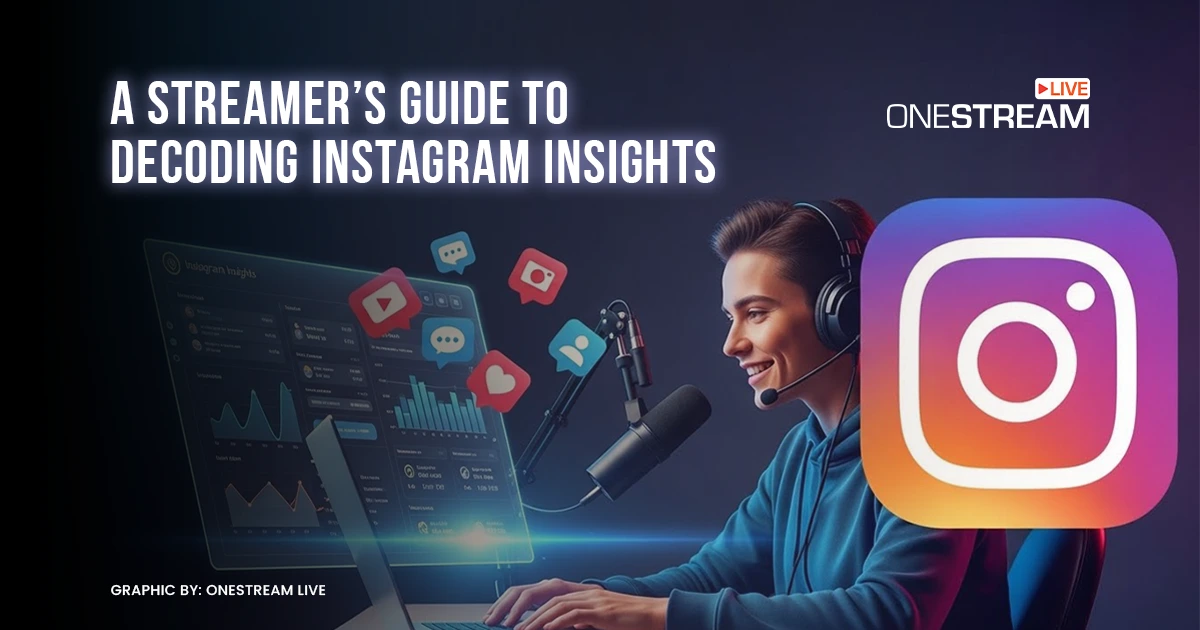Streamers in 2025 must prepare for advanced and insidious attacks on web security. These new threats use artificial intelligence (AI), automation, and deepfake technology to exploit vulnerabilities in ways never seen before.
Here are the cutting-edge security risks streamers must watch out for and how to counter them.
7 Ultimate Web Security Trends for Streamers
1. Deepfake Phishing Attacks on Streamers
Phishing attacks have evolved from spoofed emails and login pages. With user-friendly deepfake tech, cybercriminals create super-realistic voice and video impersonations of streamers, sponsors, or even moderators on the platform. Attackers are able to:
- Impersonate a streamer’s voice in chat to convince fans to send money.
- Use AI-generated video calls to pose as brand representatives with fake sponsorship deals.
- Clone moderator voices to deliver fake warnings or phishing in Discord group chats and servers.
How to stay safe in web security:
AI-Based Authentication. Use AI-driven verification tools that detect deepfake artifacts.
Watermarking and Digital Signatures. Sign all official communication with blockchain-based authentication.
Video & Audio Fingerprinting. Use services that analyze the distinctive patterns of genuine recordings to label potential deepfakes.
In early 2024, thousands of New Hampshire voters got robocalls that used a deepfake voice sounding like President Biden discouraging them from voting in the New Hampshire primary. The audio cost $1 and took less than 20 minutes to create.
2. AI-Powered DDoS Attacks on Live Streams
DDoS (Distributed Denial of Service) attacks flood a streamer’s network with traffic to force a stream offline. They are now supercharged by AI. These AI-powered botnets can:
Identify and exploit weaknesses in real time.
Mimic legitimate users, making it harder for traditional defenses to block malicious traffic.
Change attack signatures in real time to counteract mitigation strategies.
Safety measures for enhancing web security:
AI-Powered Threat Detection. Use machine learning-powered firewalls that can distinguish between real and bot traffic.
Decentralized Cloud Streaming. Stream traffic on multiple cloud servers to maintain interruption to a bare minimum.
Edge Computing for Load Balancing. Add edge nodes that soak and deflect the malicious traffic before the stream.
Gcore’s latest DDoS Radar report reveals a 56% YoY rise in the total number of DDoS attacks, with the largest attack peaking at a record 2 Tbps.
3. Real-Time Content Hijacking
Hackers nowadays take over live video streams in real time. They insert or alter content without the streamer’s knowledge. This may be for the purpose of:
Injecting offending content that violates platform policies, leading to bans.
Displaying fake sponsorship messages to mislead viewers.
Altering the words of a streamer to spread disinformation.
How to ensure web security:
End-to-End Encryption. Encrypt streaming data to prevent interception.
Blockchain-Based Content Verification. Record hashes of live video on a blockchain to provide assurance of authenticity in case manipulation is alleged.
Secure Streaming Protocols (SRT, WebRTC). Use secure transport mechanisms that are designed to be tamper-proof.
Recent trends highlight that cybercriminals often exploit insecure transmission and storage points during live streams. By implementing strategies focused on securing data across networks—including strong encryption for both data at rest and in transit as well as rigorous access control—streamers can significantly reduce the risk of exposure. Following key cloud data security best practices helps not only with immediate protection but also supports compliance, auditing, and rapid recovery from threats.
If you have your own streaming platform, an information flow diagram can help. It shows the flow of data through the software system, networks, containers, storage points, and beyond. This can help identify hijacking in real-time.
4. Zero-Click Malware via Stream Chats
Traditional malware typically requires users to click on a link to infect them. In 2025, “zero-click” malware exploits vulnerabilities in chat platforms without any user interaction. Malicious messages can:
Execute scripts that infect streamers’ devices.
Steal login credentials or payment information.
Install spyware that monitors keystrokes and screen activity.
How to be safe in web security:
AI-Powered Content Moderation. Use automated tools that scan messages in real time for potential exploits.
Sandboxed Browsing. Utilize virtual machines or secure browser containers to view chat.
Disable Auto-Loading of Media and Scripts. Modify security settings to prevent the execution of untrusted content.
In 2021, an investigation by a global consortium of journalists revealed that Pegasus had been used to spy on at least 50,000 phone numbers in several countries.
5. Synthetic Viewership Fraud
Fake viewers and bot-driven engagement have been a problem for years. Nevertheless, AI now makes synthetic engagement nearly indistinguishable from real audience interactions. Fraudulent viewers can:
Manipulate analytics, misleading sponsors about a streamer’s real influence.
Get streamers flagged or banned due to artificially inflated numbers.
Generate fake engagement on competitor streams to trigger platform penalties.
How to stay safe in web security:
Blockchain-Based Audience Verification. Ensure that audience interactions are stored on an immutable ledger.
AI-Based Anomaly Detection. Use tools that monitor viewer behavior patterns for suspicious activity.
Multi-Layered CAPTCHA & Authentication for Chat Participation. Require proof-of-human verification before allowing engagement.
This problem can be especially acute when you host a webinar.
6. AI-Generated Reputation Attacks
Malicious actors now use AI to generate realistic but fake content. What is dangerous about it?
These are the types of content that hurt a streamer’s reputation. These include:
Impostor chat logs claiming to be faked hate speech.
Synthetic video recordings saying or doing something on behalf of the streamer, never said or done.
Fabricated social media posts undistinguishable from authentic ones with proper engagement records.
How to stay safe in web security:
AI-Powered Forensic Tools. Use tools that examine metadata and AI artifacts within suspected faked content.
Publicly Auditable Content Repositories. Keep a verifiable history of all streams and interactions.
Legal & Platform Reporting Procedures. Work with streaming websites to promptly dismiss AI-generated defamation.
7. Compromised Streaming Add-ons & Plug-ins
treamers require overlays and browser add-ons. However, criminals are inserting malware into compromised plug-ins. These malicious plug-ins can:
Pinch login credentials.
Inject popups or drain donations.
Steal traffic to unsafe websites.
Tips for remaining secure in web security:
Use Only Validated Extensions. Obtain plug-ins from legitimate sources with regular security scanning.
Watch Permissions Carefully. Restrict what information plugins have access to.
Periodic Security Scans. Utilize endpoint security software to scan for unauthorized modifications to browser add-ons.
Three dozen Chrome extensions, collectively used by 2.6 million people, were found by Researchers to have had data-stealing malware injected into them by an attacker.
Final Thoughts
So, here’s a rundown of how streamers can stay ahead in 2025 by investing in web security:
Utilize AI-powered security software to counter AI-powered attacks;
Use blockchain and digital signatures for content verification.
Maintain real-time threat detection and adaptive defense;
Audit third-party software and browser extensions on a regular basis.
Streams taking action today will be the ones who will succeed in a more perilous cyber world.
OneStream Live is a cloud-based live streaming solution to create, schedule, and multistream professional-looking live streams across 45+ social media platforms and the web simultaneously. For content-related queries and feedback, write to us at [email protected]. You’re also welcome to Write for Us!









